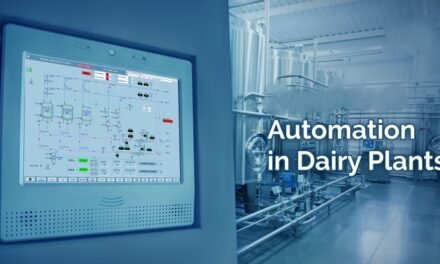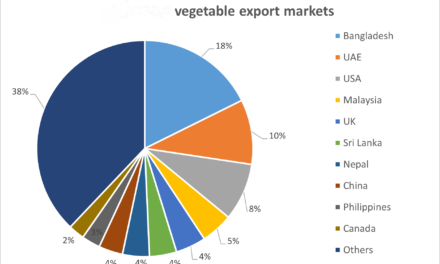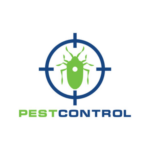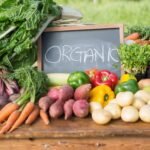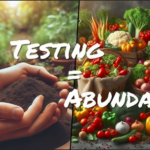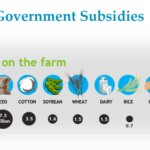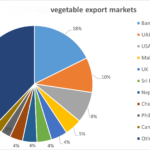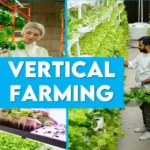Government subsidies can have a significant impact on vegetable farming, both positive and negative. These subsidies are financial aids provided by governments to support agricultural production, stabilize food prices, ensure food security, and promote sustainable farming practices. The impact of these subsidies on vegetable farming can vary based on the type of subsidy, the structure of the farming system, and the goals of the government.
Here’s an overview of how government subsidies affect vegetable farming:
1. Financial Support for Farmers
- Positive Impact:
- Increased Profitability: Subsidies can directly reduce the cost of production for vegetable farmers by providing financial assistance for inputs like seeds, fertilizers, and pesticides. This lowers the financial burden and can lead to improved profitability.
- Investment in Equipment: Subsidies can help farmers invest in modern farming equipment, irrigation systems, and technology, which can improve crop yield and efficiency.
- Access to Capital: For smallholder farmers, government subsidies can provide access to capital, enabling them to purchase essential resources that they might not otherwise afford.
- Example: In some countries, subsidies on fertilizers or water for irrigation make it easier for farmers to manage operational costs, especially for high-demand vegetables like tomatoes, peppers, or leafy greens.
2. Promoting Sustainable Practices
- Positive Impact:
- Incentives for Organic Farming: Governments may offer subsidies or grants to encourage organic vegetable farming, which can help promote sustainability, reduce pesticide use, and encourage soil health improvement.
- Adoption of Climate-Smart Techniques: Governments may subsidize the cost of sustainable farming practices like crop rotation, agroforestry, or water-efficient irrigation systems, helping farmers adapt to climate change.
- Environmental Conservation: Subsidies can support environmentally friendly farming practices, such as reducing chemical pesticide usage or preventing soil erosion, thus fostering long-term environmental sustainability.
- Example: Some European Union countries offer subsidies to farmers who adopt organic farming methods or use minimal chemical inputs, helping them maintain environmentally friendly practices.
3. Stabilizing Food Prices and Supply
- Positive Impact:
- Price Stability: Subsidies can help stabilize vegetable prices by ensuring a steady supply of produce, especially during periods of adverse weather or market fluctuations. This helps maintain consumer affordability while protecting farmers’ income.
- Ensuring Food Security: In developing countries, government subsidies can ensure that vegetable farming remains profitable and stable, contributing to food security by supporting local production of essential crops.
- Example: In regions where vegetable supply is highly variable due to seasonal changes or weather patterns, subsidies on irrigation systems or seeds can help farmers maintain a steady supply of fresh vegetables year-round.
4. Encouraging Investment in Rural Development
- Positive Impact:
- Rural Employment: Subsidies can create jobs in rural areas by incentivizing vegetable farming, thereby supporting rural economies and reducing rural-urban migration.
- Infrastructure Development: Government subsidies for infrastructure, such as improved roads, transportation, and storage facilities, can help vegetable farmers reduce post-harvest losses and improve market access.
- Example: In countries with a high percentage of vegetable farming in rural areas, subsidies for rural infrastructure development can help farmers get their produce to markets more efficiently, reducing waste and improving profitability.
5. Reducing the Risk of Crop Failures
- Positive Impact:
- Weather and Disaster Relief: In the case of crop failures due to extreme weather events or natural disasters, government subsidies can provide financial assistance to affected farmers. This can help them recover quickly, ensuring continued vegetable production.
- Risk Management: Subsidies for crop insurance or risk management programs can protect farmers from financial losses due to unexpected conditions, such as droughts, floods, or pest outbreaks.
- Example: In regions prone to drought, subsidies for irrigation systems or crop insurance programs can provide farmers with a safety net, helping them recover from crop failures.
6. Supporting Small-Scale and Family Farms
- Positive Impact:
- Access to Resources: Government subsidies often focus on supporting small-scale farmers, enabling them to access inputs and technology that would otherwise be unaffordable. This helps level the playing field and promotes equity within the agricultural sector.
- Farm Diversification: Subsidies can encourage smallholder farmers to diversify their crops, including vegetable production, which enhances income stability and reduces dependence on a single crop.
- Example: In countries with significant small-scale farming populations, subsidies targeted at family farms can help them improve productivity and diversify into high-value vegetable crops.
7. Market Distortion
- Negative Impact:
- Overproduction: In some cases, government subsidies may encourage overproduction of certain vegetable crops, leading to an oversupply in the market. This can drive down prices, making it harder for farmers to profit from their produce.
- Market Inefficiencies: If subsidies are not carefully targeted, they can create market distortions, such as encouraging farmers to grow vegetables that are subsidized rather than those in demand. This can lead to an imbalance in production and waste.
- Example: In countries where subsidies are disproportionately allocated to specific crops, farmers may shift production toward those subsidized crops, even if there is no demand, leading to overproduction and market imbalances.
8. Dependence on Subsidies
- Negative Impact:
- Lack of Long-Term Sustainability: Farmers may become dependent on subsidies for their livelihood, which can reduce their incentive to adopt efficient, self-sustaining farming practices.
- Reduced Innovation: If subsidies are not linked to productivity or innovation, farmers may not be motivated to improve their practices, invest in technology, or adapt to market trends.
- Example: If subsidies provide a constant income support regardless of farming efficiency, farmers may not innovate or invest in modern farming techniques that could enhance long-term productivity.
9. Environmental Impact of Subsidy Programs
- Negative Impact:
- Encouraging Unsustainable Practices: In some cases, subsidies for conventional farming inputs, like chemical fertilizers and pesticides, may incentivize practices that degrade soil health, water quality, and biodiversity. This can harm the environment in the long term.
- Overuse of Resources: If subsidies encourage the overuse of water, fertilizers, or pesticides, it can lead to environmental degradation, such as soil erosion or groundwater contamination.
- Example: Subsidies for synthetic fertilizers or pesticides in vegetable farming may lead to overuse, impacting soil quality and increasing pollution in nearby water bodies.
10. Inequitable Distribution of Subsidies
- Negative Impact:
- Favoritism Toward Large Farms: Government subsidies may disproportionately benefit large-scale farmers who can meet the criteria for receiving subsidies, leaving smallholders or less resourceful farmers at a disadvantage.
- Inefficiencies in Implementation: If subsidies are poorly designed or difficult to access, they may not reach the farmers who need them most, undermining their intended benefits.
- Example: Large agribusinesses may have better access to government subsidies than small-scale vegetable farmers, leading to a concentration of resources and exacerbating income inequality within the agricultural sector.
Conclusion
Government subsidies can greatly benefit vegetable farmers by reducing production costs, ensuring food security, and promoting sustainable practices. However, if not carefully structured, subsidies can lead to market distortions, overproduction, environmental degradation, and dependency. To maximize the positive impact, subsidies should be targeted, transparent, and linked to sustainable farming practices that promote long-term agricultural productivity and environmental health.
Hashtags
#RuralDevelopment #CropDiversification #FarmersMarket #OrganicFarming #FoodSustainability #AgriculturalInnovation #FarmersRights #ClimateChange #AgriculturalTechnology #FoodJustice #FarmersEmpowerment #AgriculturalEducation #FoodWaste #SmallScaleFarming #CommunitySupportedAgriculture #FarmToTable #AgriculturalSubsidies #FoodPolicy #SustainableFarming #AgriculturalDevelopment


